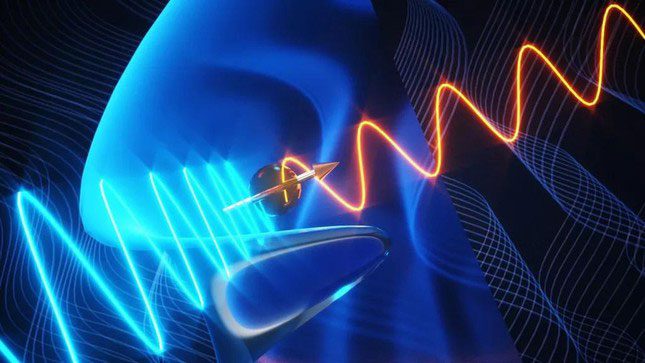Researchers have discovered a new magnetic particle associated with the Higgs boson. While the discovery of the Higgs boson required the tremendous particle acceleration power of the Large Hadron Collider (LHC), this newly observed particle – known as the axial Higgs boson – was found using an experiment that could fit on a small kitchen countertop.
The axial Higgs boson – responsible for giving mass to other particles – may be a candidate for dark matter, which constitutes 85% of the universe’s total mass but only reveals itself through gravitational effects.

Physicists have discovered a previously unseen particle right on a kitchen countertop.
Kenneth Burch, a physics professor at Boston University and the lead researcher of the discovery team, stated: “When my student showed me the data, I thought, you don’t find a new particle on your desk every day.”
The axial Higgs boson differs from the Higgs boson first discovered by the ATLAS and CMS detectors at the LHC a decade ago in 2012, because it possesses magnetic moment, intensity, or orientation that generates a magnetic field. Consequently, it requires a more complex theory to describe it.
The Higgs boson is naturally produced whenever such symmetries are broken; however, typically only one symmetry is broken at a time, and thus the Higgs particle is described solely by its energy.
The theory behind the axial Higgs boson is more complex. Burch, along with his colleagues, described the new magnetic Higgs particle in a study published on June 8 in the journal Nature, explaining that the original Higgs particle does not directly couple with light, meaning it must be generated by colliding other particles along with massive magnets and high-powered laser beams while simultaneously cooling samples to extremely low temperatures. It is the decay of those initial particles into other particles that briefly indicates the presence of the Higgs particle.
The size of these charge density waves, emerging at room temperature, can be adjusted over time, creating the axial Higgs mode.
Particle physicists had previously predicted the axial Higgs mode and even used it to explain dark matter, but this is the first time it has been observed. It is also the first instance where scientists have observed a state with multiple broken symmetries.
The fact that this double symmetry breaking aligns with current physical theories is intriguing, as it may provide a means to create hitherto unseen particles that could be dark matter.
He added that the addition of this symmetry breaking through the axial Higgs mode is one way to achieve that. Although it had been predicted by physicists, the observation of the axial Higgs boson surprised the research team, and they spent a year trying to verify their results.




















































